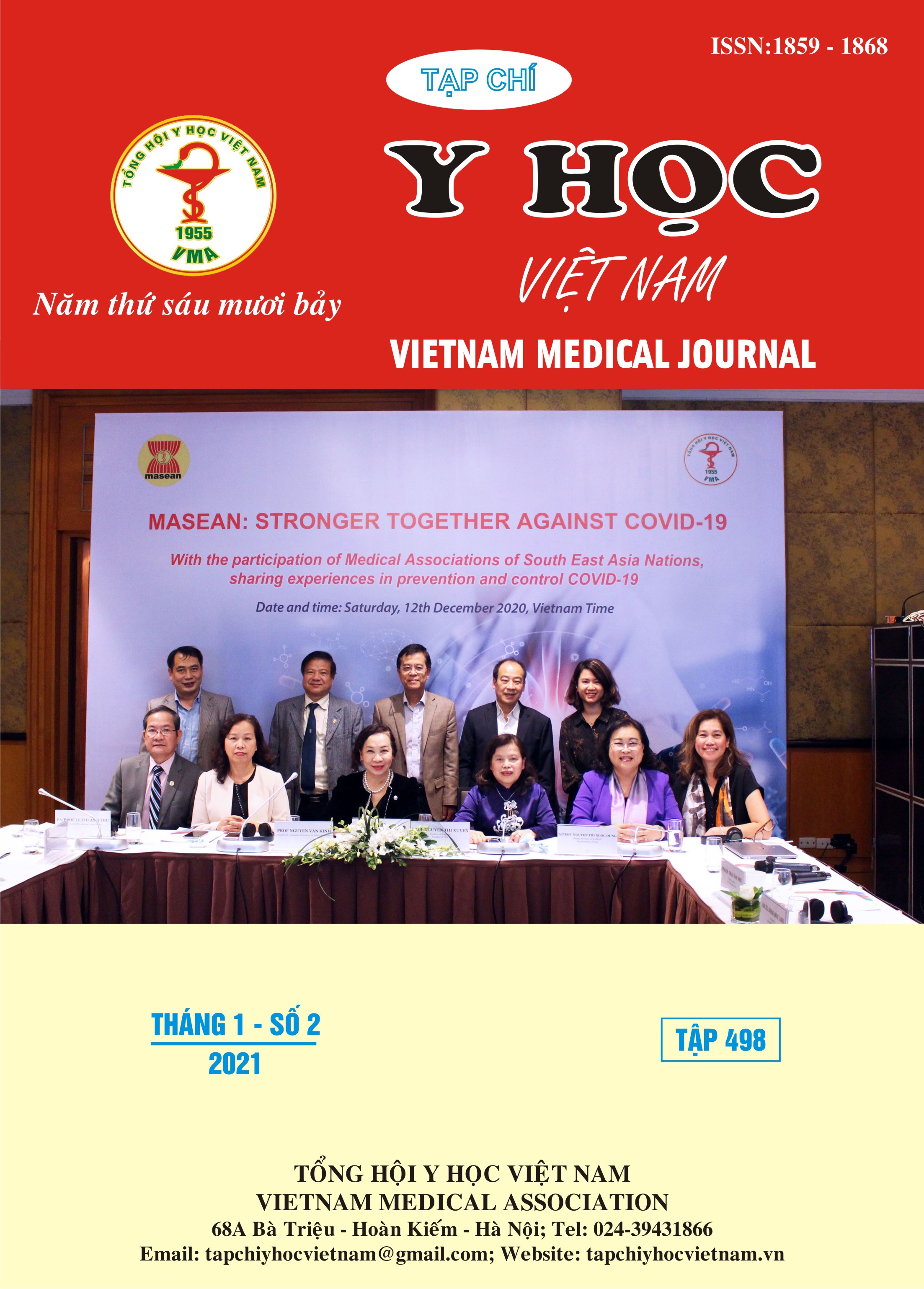ĐÁNH GIÁ KẾT QUẢ VÀ ĐỘ AN TOÀN CỦA KỸ THUẬT LẤY SỎI MẬT QUA DA Ở BỆNH NHÂN TẮC MẬT DO SỎI
Nội dung chính của bài viết
Tóm tắt
Mục tiêu: Nghiên cứu tính hiệu quả và độ an toàn của kỹ thuật lấy sỏi mật qua da dưới DSA. Đối tượng và phương pháp nghiên cứu: Nghiên cứu trên 43 bệnh nhân tắc mật do sỏi, lấy sỏi qua da bằng giọ bóp vỡ sỏi rồi lấy ra qua ống thông mở đường mật hoặc dùng bóng nong đẩy xuống tá tràng. Kết quả: Tỷ lệ thành công về mặt kỹ thuật với tiêu chí tái lưu thông mật ruột 97%, về mặt lấy được hết sỏi là 81,4%, các biến chứng lớn không có, chỉ gặp 4,6% có chảy máu, 6,9% nhiểm khuẩn nhẹ đường mật và 4,6% đau trong can thiệp. 93% số bệnh nhân chỉ cần làm một lần là đạt được hiệu quả. Kết luận: Kỹ thuật lấy sỏi mật qua da dưới DSA là kỹ thuật an toàn, với tỷ lệ thành công tái thông được đường mật cao.
Chi tiết bài viết
Từ khóa
kỹ thuật lấy sỏi mật qua da
Tài liệu tham khảo
2. Ozcan N., Kahriman G., và Mavili E. (2012). Percutaneous Transhepatic Removal of Bile Duct Stones: Results of 261 Patients. CardioVascular and Interventional Radiology, 35(3), 621–627.Ilgit E.T., Gürel K., và Onal B. (2002). Percutaneous management of bile duct stones. Eur J Radiol, 43(3), 237–245.
3. J. Shin, H. Shim et al. A single center study of biliary stone removal through the percutaneous transhepatic biliary drainage route: results of 695 patients - Journal of Vascular and Interventional Radiology. , accessed: 02/07/ 2018.
4. Phạm Văn Anh (2014), Nghiên cứu Đánh giá kết quả phẫu thuật có tán sỏi điện thủy lực điều trị sỏi đường mật trong gan có chít hẹp đường mật. Tại BV Việt Đức - LV tốt nghiệp Thạc SỸ. .
5. Riciardi R, Islam S, Canete JJ et al (2003) Effectiveness and long-term results of laparoscopic common bile duct exploration. Surg Endosc 17:19–22.
6. Schirmer BD, Winters KL, Edlich RF (2005) Cholelithiasis and cholecystitis. J Long Term Eff Med Implants 15:329–338. .
7. Kim H.C., Park S.H., Shin H.C., Park S.J., Kim H.H., et al (2004), “Three- dimensional reconstructed images using multidetector computed tomography in evaluation of the biliary tract: an illusive review”, Abdom Imaging, 29, pp. 472- 478.
8. Shin J., Shim H., và Yoon H. (2014). A single center study of biliary stone removal through the percutaneous transhepatic biliary drainage route: results of 695 patients. Journal of Vascular and Interventional Radiology, 25(3), S50.
9. Park Y.S., Kim J.H., Choi Y.W. và cộng sự. (2005). Percutaneous treatment of extrahepatic bile duct stones assisted by balloon sphincteroplasty and occlusion balloon. Korean J Radiol, 6(4), 235–240.


